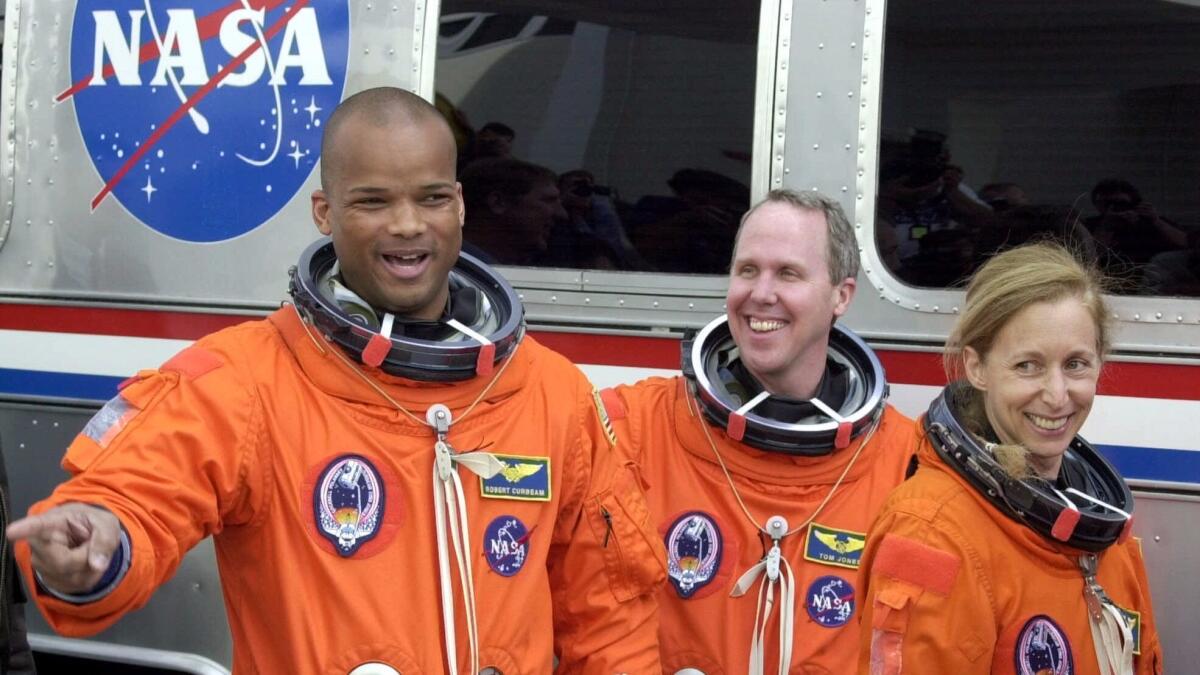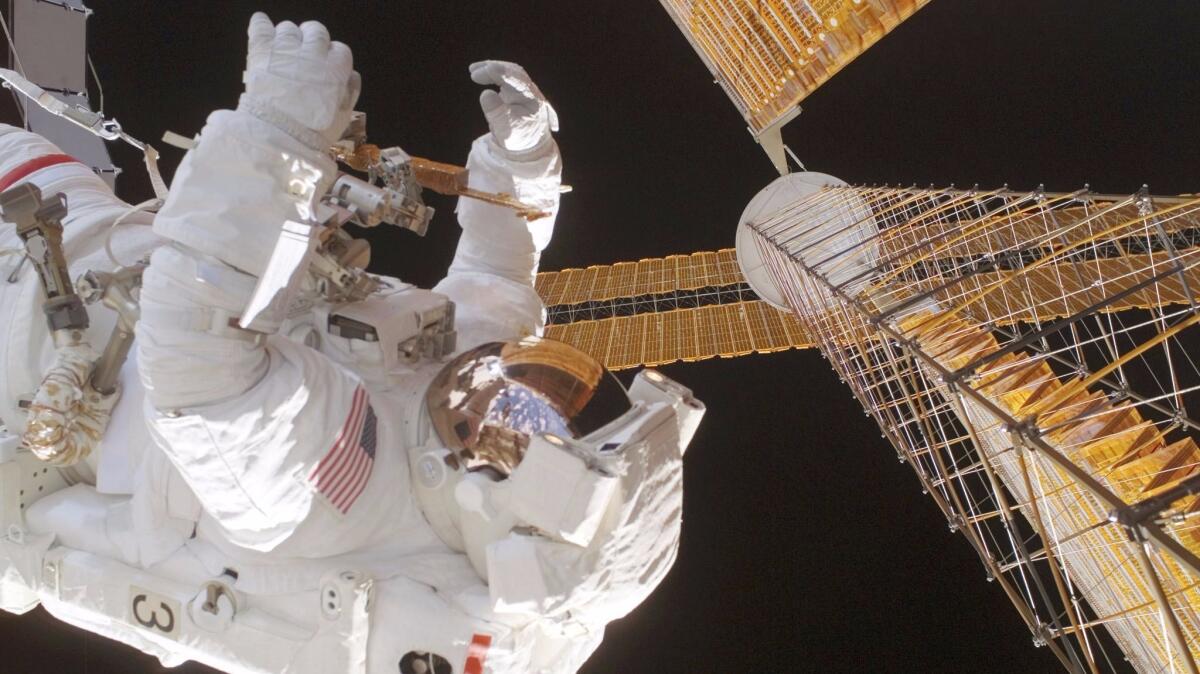How I Made It: After 900 hours in space, Robert Curbeam is now down to earth at Raytheon
Robert Curbeam, 55, is vice president and deputy of the space systems division at Raytheon Co. A retired U.S. Navy captain and former NASA astronaut, Curbeam co-holds the record for most spacewalks — four — by one astronaut during a single Space Shuttle mission.
Inspired by mom
Born and raised in Baltimore, Curbeam is the son of a factory worker father and chemistry teacher mother. He inherited his mother’s knack for science. As a child, Curbeam would head to the end of his block and look south at dusk in hopes of catching a glimpse of Skylab, the U.S. space station that orbited the Earth from 1973 to 1979.
To this day, he’s not sure whether he ever truly saw it zoom overhead, but the spacecraft design leaps of the Apollo era and the development of the so-called “teen series” of fighter jets like the F-14 Tomcat sparked Curbeam’s passion for aerospace engineering.
“With my mom’s influence, I had a love of science really, really early,” Curbeam said. “I was always interested in knowing how things worked.”
Choosing a path
In 1980, Curbeam entered the U.S. Naval Academy in Annapolis, Md., intending to become a Marine. A three-day trip underwater aboard the USS Benjamin Franklin ballistic missile submarine made him consider a career in subs. But a day before an interview, he chose to go with his childhood love of aviation.
“I just sat there and said, ‘I’ve always just loved airplanes,’ ” Curbeam said. “This is always what I wanted to do.”
Flight tests
After graduating from the Naval Academy with a bachelor’s degree in aerospace engineering, Curbeam began naval flight officer training, got his wings and then flew F-14 fighter jets off the now-scrapped USS Forrestal aircraft carrier on deployments to the Caribbean and Mediterranean seas and Arctic and Indian oceans.
He attended the Navy Fighter Weapons School, better known as Top Gun, and later went to test-pilot school, graduating in 1991. He also got a master’s degree in aeronautical engineering from the Naval Postgraduate School in Monterey, Calif.
Curbeam served as project officer for the F-14 air-to-ground weapons separation program, which performed flight tests to ensure that the laser-guided bombs, practice munitions and forward-looking infrared system were compatible with the aircraft and safe to use.
“That was probably the most professionally satisfying job of my career,” he said. “They had a motto in strike ordnance — ‘What are you doing for the fleet today?’ — and I felt like every day, I was doing good work to help the fleet perform its mission.”
More success stories from How I Made It »
With my mom’s influence, I had a love of science really, really early.
— Robert Curbeam
Ready for launch

A 1991 field trip to NASA’s Johnson Space Center in Houston changed Curbeam’s career trajectory. There, he met NASA astronaut Kathy Thornton, who briefed the Navy test pilots on her time in space. Curbeam was most intrigued by the amount of technical work done by the astronauts.
“The more she talked, the more convinced I was that I wanted to be like her,” he said.
He applied to be an astronaut in 1993 and got the phone call from NASA on Dec. 7, 1994.
Keeping calm

Curbeam would go on to log more than 901 hours in space — including 45 hours on spacewalks — as part of three space shuttle missions.
But on his very first spacewalk, a connector to a hose he was supposed to hook from a cooling system on the International Space Station to the U.S. lab began to leak, spraying toxic ammonia everywhere, including on him. Curbeam described the experience as “moving a hose in a blizzard.”
His training from naval aviation kicked in, and he was able to stay calm, communicate with the ground crew, stop the leak and get decontaminated so he could get back to the spacecraft.
“The ability to take a situation that has gone either wrong or has gone badly … and calmly and coolly address it and succeed in that endeavor to mitigate the risk is real, real important,” Curbeam said.
Going into business
Upon retiring from NASA and the Navy in 2007, Curbeam joined the private sector, fulfilling a longtime goal of entering the business world. After spending 3 1/2 years at risk-management firm Ares Corp., he was approached by Raytheon and became vice president of mission assurance in 2011. Two years ago, he moved to El Segundo to join the company’s space systems division.
One of the main projects he oversees is the Visible Infrared Imaging Radiometer Suite, also known as VIIRS, which is an instrument that monitors global weather patterns and has been launched on two National Oceanic and Atmospheric Administrationsatellites. Curbeam also leads the division’s civil and international business.
“At the end of the day, it’s about building systems that work on time, first time, every time,” he said.
Personal
Curbeam lives in Playa Vista and loves to golf, lift weights and exercise. He has two adult children: a daughter who lives in Chicago and a son in Dallas.
Twitter: @smasunaga
Inside the business of entertainment
The Wide Shot brings you news, analysis and insights on everything from streaming wars to production — and what it all means for the future.
You may occasionally receive promotional content from the Los Angeles Times.








